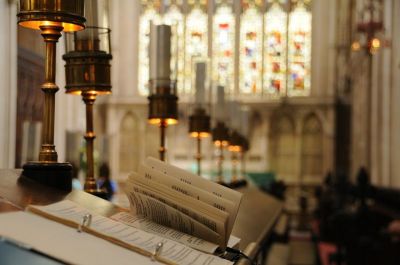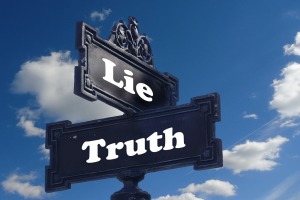Reformation Hymns

Reformation Sunday is coming up on October 28. In our church, each year on Reformation Sunday we sing Reformation hymns, that is, hymns that in some way connect to the Reformers and the movement they sparked.
If you are in charge of choosing hymns for your Reformation Sunday service, here are some you might consider using (along with free downloads!):
A Mighty Fortress Is Our God (EIN FESTE BURG)
You cannot celebrate the Reformation without singing Martin Luther's most well-known hymn. Luther wrote both the lyrics and the tune to this hymn in 1529. They lyrics are actually a paraphrase of Psalm 46, expressing confidence and comfort in the Lord's protection of his people. For our hymnal, we chose to use a harmonization composed by J. S. Bach, whose church music rose as a direct result of Luther's worship reforms.
Out of the Depths I Cry to Thee (AUS TIEFER NOT)
A lesser known hymn of Martin Luther, this paraphrase of Psalm 130, written earlier than "A Mighty Fortress" in 1524, is an expression of true repentance and confidence in God's power to forgive through Christ. Luther wrote the melody as well, and his lyrics were translated into English by the well-known translator, Catherine Winkworth in 1863.
Christ Jesus Lay in Death's Strong Bands (CHRIST LAG IN TODESBANDEN)
Another important hymn of Martin Luther, written also in 1524, is this hymn celebrating Christ's death and resurrection. Luther based this text on the older Latin, Victimae Paschali. The tune was also originally a Latin melody from around 1100, and was adapted in 1524 by Luther's first hymn tune collaborator, Johann Walther.
To Avert from Men God's Wrath (HUS)
Martin Luther adapted this Communion hymn text in 1524 from John Hus, the Bohemian Reformer and martyr from a hundred years prior, who wrote the original hymn in 1410. The tune was composed for this text and included in the 1628 Cantionale Germanicum in Dresden.
Now Thank We All Our God (NUN DANKET ALLE GOTT)
The Thirty Years' War was fought in Central Europe between 1618 and 1648 as part of the Counter-Reformation strife between new Protestants and Roman Catholics. Lutheran pastor Martin Rinkart wrote this hymn, often called "The Te Deum of Germany," in the midst of the war. Rinkart conducted as many as fifty funerals in any given day during the conflict, including that of his own wife. The tune was composed by one of the most influential second generation Lutheran chorale composers, Johann Crüger, in 1647, and harmonized in 1840 by Felix Mendelssohn.
Ah, Holy Jesus (HERZLIEBSTER JESU)
This hymn, most appropriate for use in remembrance of Christ's atoning sacrifice, was written in 1630 by Lutheran pastor Johann Heermann. The tune was composed by Johann Crüger in 1640, and was frequently used by J. S. Bach.
All People That on Earth Do Dwell (OLD HUNDREDTH)
Although Lutheran hymns often get the most attention in relation to the Reformation, John Calvin's psalm tradition is also an important legacy of this period. William Kethe's 1561 paraphrase of Psalm 100 is likely the most well-known Reformation psalm paraphrase in English, and it is set to French composer Louis Bourgeois's tune, originally composed for Psalm 134 in the 1551 Genevan Psalter.
Jesus, Priceless Treasure (JESU, MEINE FREUDE)
A stunningly beautiful text and tune about Christ, this hymn was written in 1653 by Lutheran theologian Johann Franck, and the tune was composed in the same year by Johann Crüger. Bach used this chorale as well, and we have used his harmonization in our hymnal.
Praise to the Lord, the Almighty (LOBE DEN HERREN)
One of the most well-known Lutheran chorales, this hymn was written in 1680 by Lutheran pastor Joahim Neander, and the tune comes from a collection on Lutheran chorales from 1665. Interesting trivia: Neander often held religious services in a particular valley that was later called "Neander's Valley." This valley became famous when in 1856 the remains of an ancient man were found in that valley, aptly named the "Neanderthal Man."
Sing Praise to God Who Reigns Above (MIT FREUDEN ZART)
Another second generation Lutheran hymnwriter and theologian, Johann Schütz, wrote this hymns of praise in 1675. The hymns has an even deeper connection to the Reformation with its tune, which was included in the Bohemian Brethren's Kirchengesänge ("Church songs") in 1566. The Bohemian Brethren trace their theological lineage a hundred years prior to Martin Luther with John Huss's reforms in Bohemia. These Christians would later become the Moravians, significant hymn writers themselves.
Jesus, Still Lead On (SEELENBRÄUTIGAM)
Speaking of Bohemian Brethren, Nicolaus von Zinzendorf was a third generation Lutheran pietist who offered a place for Bohemian Brethren to live in Germany when they were expelled from their own country. Zinzendorf wrote several excellent hymns, including this one in 1721. The tune comes from 80 years earlier by Lutheran composer, Adam Drese.
Jesus, Thy Blood and Righteousness (GERMANY)
Another important hymn by Nicolaus Zinzendorf is this hymns about the imputed righteousness of Christ, written in 1740.




























